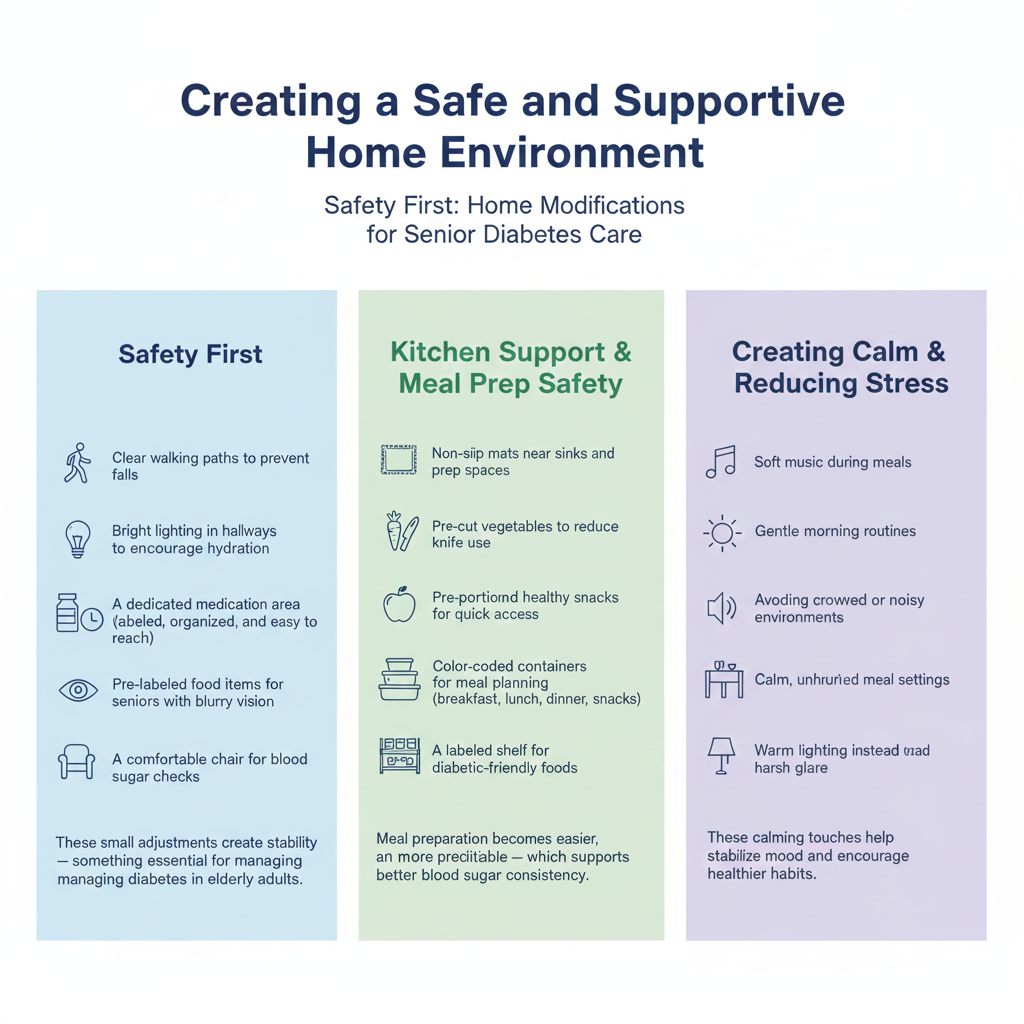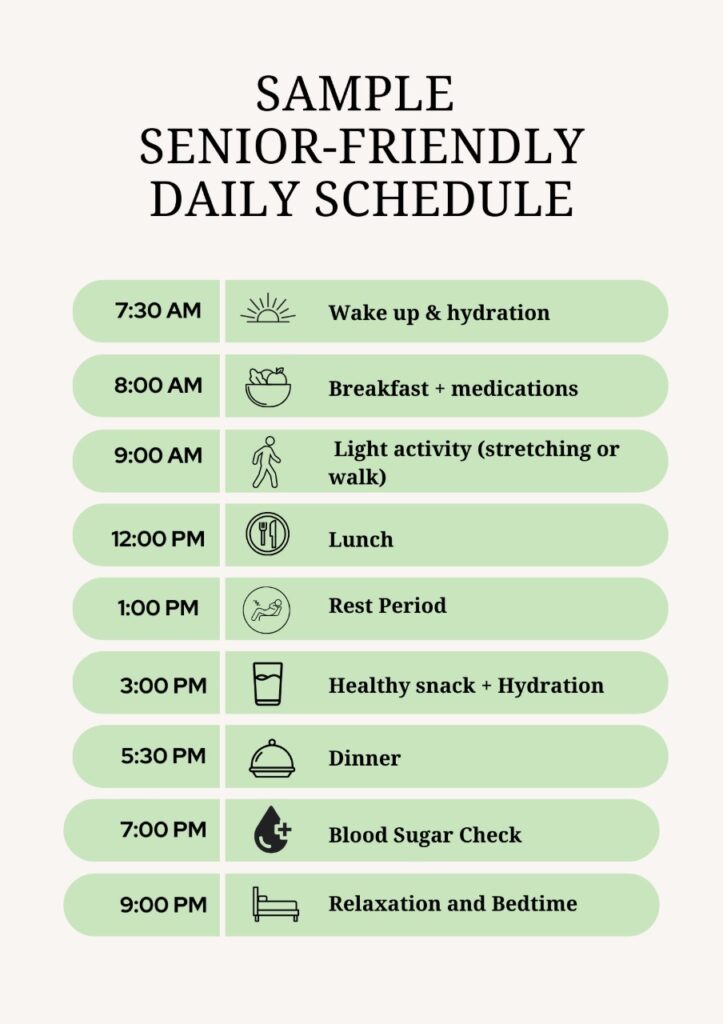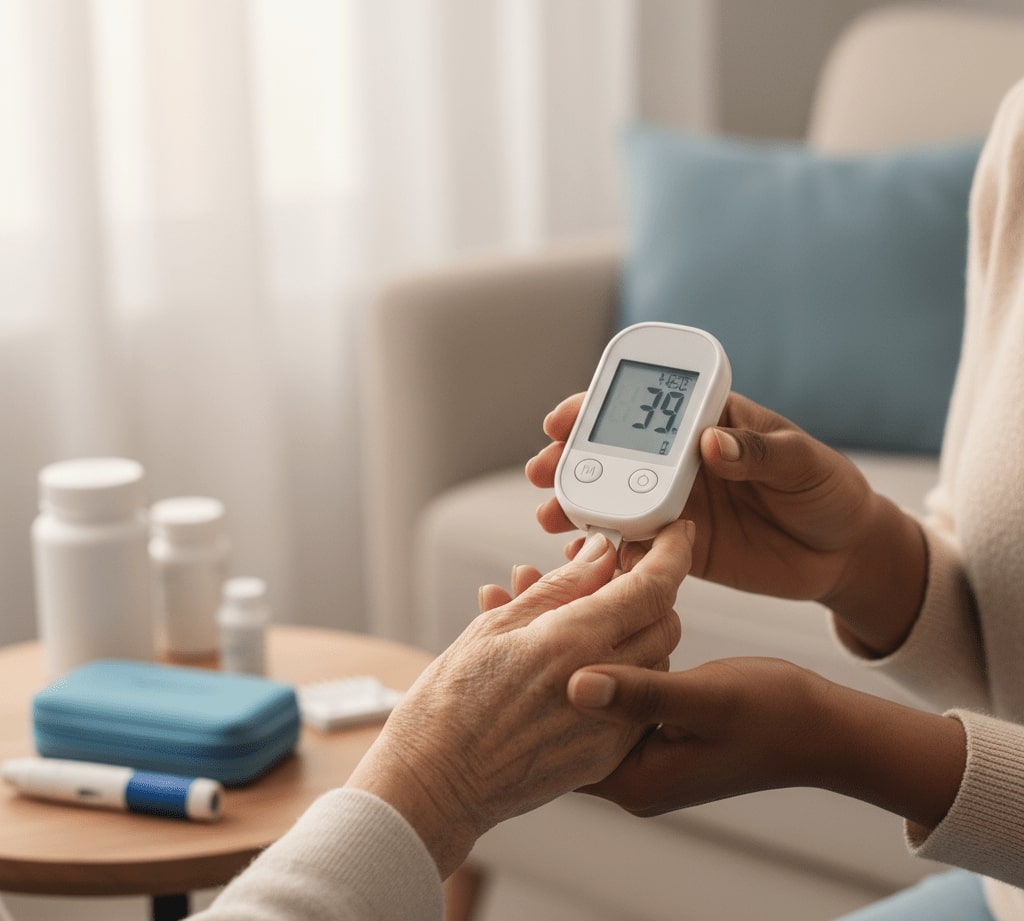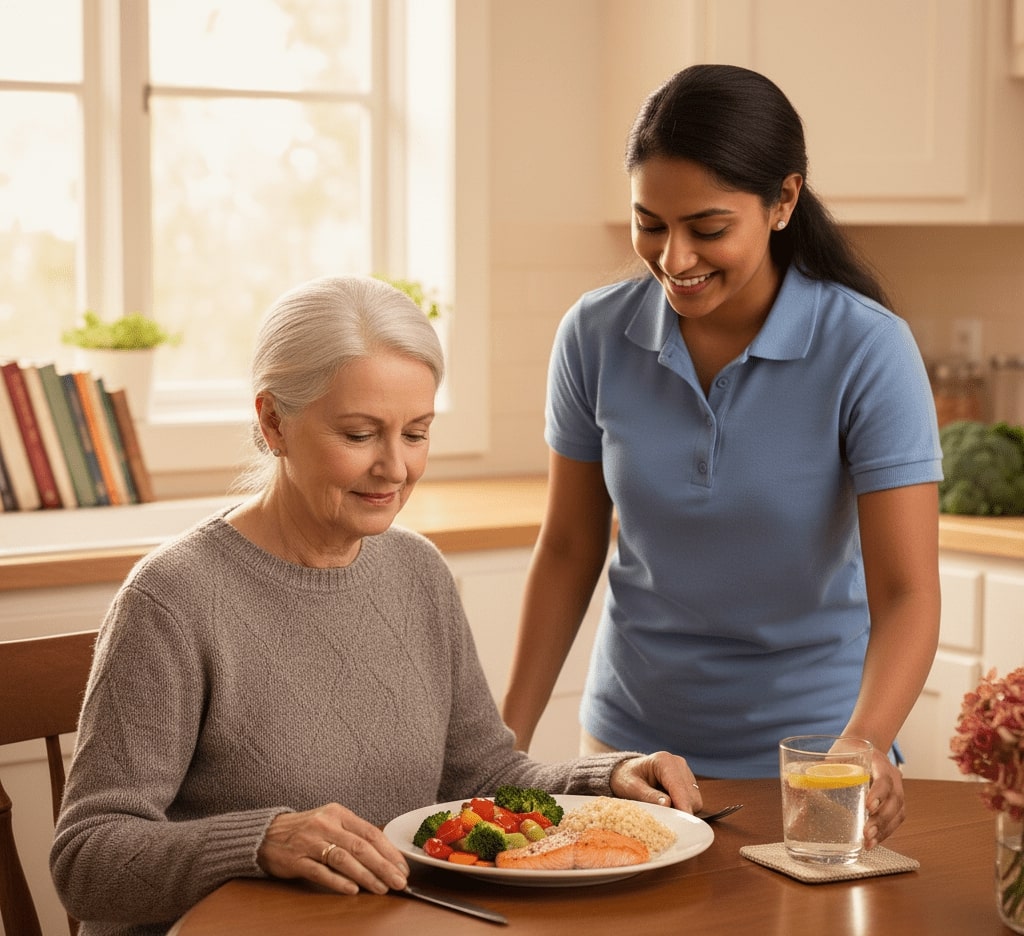Managing diabetes becomes more complex as our loved ones age — and for many families, the daily routines, diet restrictions, medication timing, and blood sugar checks can feel overwhelming. Seniors often want to stay independent, safe, and comfortable at home, while families want reassurance that every detail is being taken care of with compassion.
This guide simplifies the process. Whether you’re managing diabetes care for seniors at home or supporting an aging parent from afar, you’ll find practical steps, gentle strategies, and supportive tools to make everyday care easier and safer.
Here’s what you’ll learn:
- How diabetes affects older adults
- How to create a supportive, safe home environment
- Senior-friendly nutrition and diabetic meal planning
- Daily routines that stabilize blood sugar
- Helpful technology for monitoring and reminders
- Emotional and caregiver support
- Prevention strategies to reduce diabetic complications
Our goal is simple: to help your loved one live safely, comfortably, and confidently at home — with care delivered from the heart.
Understanding Diabetes in Older Adults
Families often wonder, “Why does diabetes seem harder to manage now that my loved one is older?”
This is incredibly common. Aging affects almost every factor that influences blood sugar.
Why Diabetes Changes With Age
As seniors grow older, their bodies naturally experience:
- Slower metabolism
- Changes in appetite and digestion
- Increased medication sensitivity
- More difficulty with mobility
- Vision changes
- Dehydration risks
- Higher likelihood of hypoglycemia (low blood sugar)
Most seniors live with Type 2 diabetes, which can appear differently in older adults. Instead of classic symptoms like thirst or hunger, seniors may show:
- Fatigue
- Confusion or forgetfulness
- Dizziness
- Irritability
- Slow wound healing
It’s also important to acknowledge the emotional impact. Seniors may feel frustrated, overwhelmed, or worried about losing independence — and caregivers often feel the weight of responsibility. A supportive, calm, and structured environment can make a world of difference.
Part 1: Safety First: Home Modifications for Senior Diabetes Care

Part 2: Senior-Friendly Daily Routines for Better Blood Sugar Control
The Power of Routine
Consistency is one of the strongest tools in senior diabetes management. Predictable routines help regulate appetite, digestion, energy levels, and medication timing.

Nutrition & Meal Planning
Senior-friendly diabetic meals should focus on foods that are gentle on the stomach and predictable in how they affect blood sugar.
Great choices include:
- Soft proteins: baked fish, turkey, chicken, lentils
- Non-starchy vegetables: spinach, zucchini, broccoli
- Whole grains: quinoa, brown rice, oats
- High-fiber foods to prevent sugar spikes
- Low-sodium options for heart health
- Simple snacks (apple slices, nuts, Greek yogurt)
Balanced, steady meals reduce the risk of sudden highs and lows.
Safe Physical Activity
Movement helps regulate blood sugar, but it must be safe and accessible.
Ideas tailored for seniors:
- Seated leg lifts
- Slow indoor walks
- Gentle stretching
- Light chores (gardening, folding laundry)
- Balance exercises for fall prevention
Small amounts of daily movement make a significant difference.
Communication Strategies for Caregivers
Kind, gentle prompting helps seniors feel respected and supported.
Try using encouraging language like:
- “Let’s take a walk together.”
- “Would you like to try this lighter meal today?”
- “Are you ready to check your sugar now?”
- “I’m here to help whenever you need me.”
Compassionate communication builds trust and reduces stress around care tasks.
Part 3: Technology That Makes Diabetes Care Easier
Technology can simplify diabetes care for seniors and bring peace of mind to families.

Smart Home Tools
Voice assistants can help with:
- Medication reminders
- Blood sugar check alerts
- Meal and hydration schedules
- Appointment reminders
Simple prompts reduce the pressure of remembering every detail.
Blood Sugar Monitoring Tools
Consider senior-friendly options like:
- Continuous Glucose Monitors (CGMs)
- Large-screen glucose meters
- Talking glucose meters for vision loss
- Caregiver-connected apps that send alerts
These tools reduce guesswork and support safer care routines.
Digital Health Support
Additional helpful devices include:
- Nutrition tracking apps
- Medication management apps
- Fall detection sensors
- Medical alert systems
They’re designed to be simple — giving seniors more independence and caregivers more confidence.
Part 4: The Heart of Diabetes Care — Preventing Complications & Supporting Emotional Health
Preventing Common Diabetic Complications
Proactive care greatly reduces risk. Encourage:
- Daily foot checks for sores or cuts
- Hydration throughout the day
- Balanced snacks to prevent lows
- Routine doctor visits
- Wearing comfortable, supportive shoes
- Keeping skin moisturized to prevent cracking
Small habits help avoid major complications.

Emotional Support for Seniors
Living with diabetes is more than a physical challenge — it’s an emotional one too.
Gentle ways to support emotional well-being:
- Encourage social connection
- Offer reassurance and praise
- Practice deep breathing or mindfulness
- Create hobbies that reduce stress (puzzles, drawing, gardening)
- Maintain routines that bring comfort
When seniors feel emotionally supported, diabetes becomes easier to manage.
Support for Caregivers
Caregiving is meaningful — but it can also be demanding.
Ways caregivers can receive support:
- Respite care
- Help with meal preparation
- Medication reminders from a professional caregiver
- Mobility assistance
- Regular check-ins from a home health aide
You don’t have to do this alone. Professional support eases the burden and ensures safe, reliable care for your loved one.
Conclusion: You Are Not Alone in This Journey
Effective diabetes care for seniors begins with:
- A safe and supportive home
- Consistent, calming routines
- Senior-friendly meals
- Helpful technology
- Emotional and caregiver support
With the right guidance, older adults living with diabetes can enjoy a healthier, safer, and more fulfilling life at home.
And with compassionate home care by your side, you can feel confident that your loved one is supported — in every meal, every routine, and every step of their journey.













